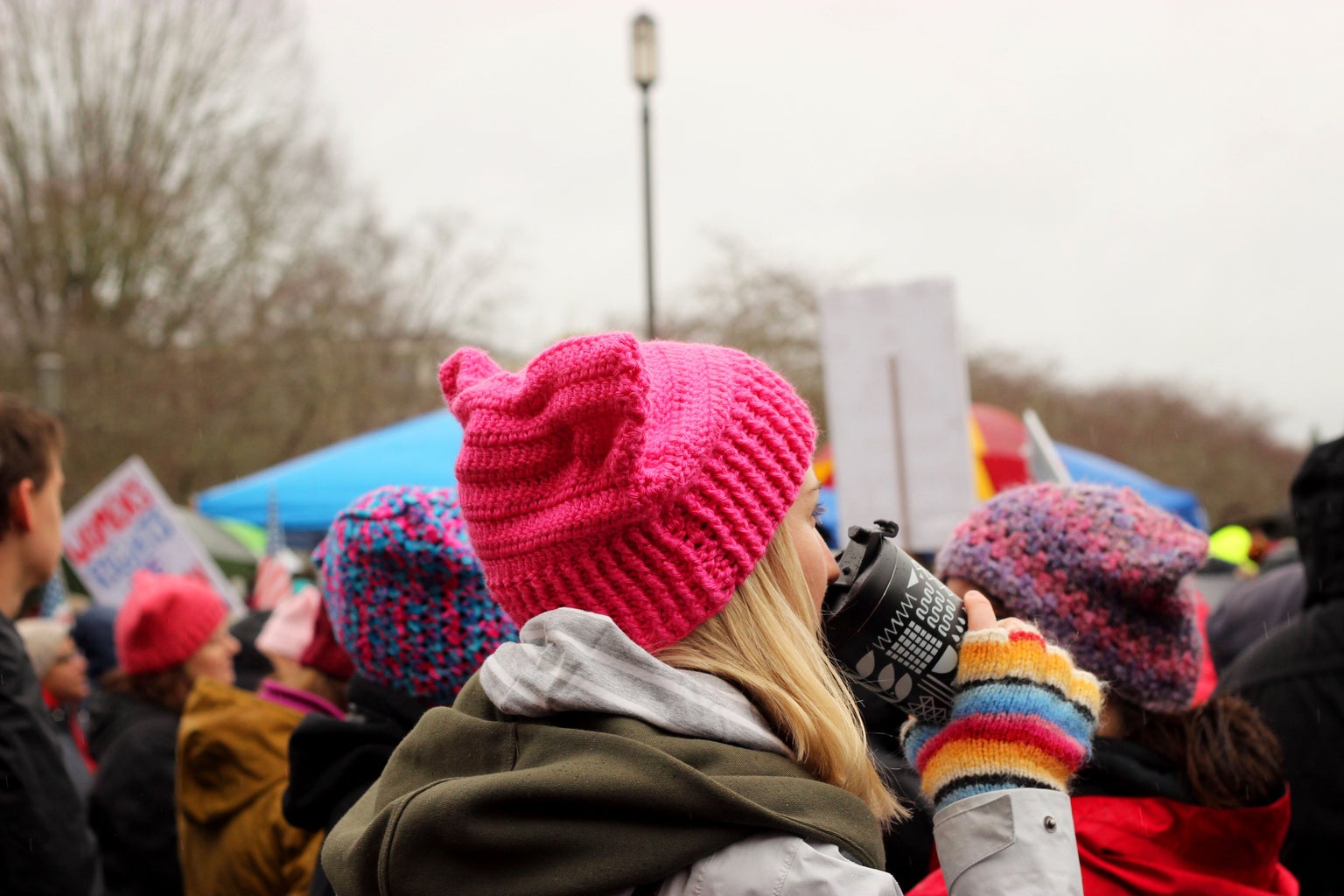Throughout college, I have heard numerous remarks regarding what societal views people have on “feminists”. Sadly, this often leads to quite a negative tone, and a common theme I have heard was “those crazy feminists you hear about on Instagram, the news, Facebook, Snapchat, Redditt” and the list goes on. As a society, we have gone so many waves and shifts through movements such as Black Lives Matter (BLM), Black History Month, Women’s History month, racial inequality, income inequality, political adversity, and etc. When we begin to hold conversations in a group setting, no matter if it is professional, personal, or family, we need to hold ourselves to higher regard by being educated behind the conversations we hold and let go of ignorant and neglectful stereotypes and norms we have heard through the grapevine. Just because a famous commentator made an Instagram live about his/her/their biased opinion, does not mean you can immediately lean into their words and call them truths.
According to Merriam Webster, feminism is “the political, economic, and social equality of the sexes.” My first acknowledgment of what feminism meant derived from a snippet of Chimamanda Ngozi Adichie’s Ted Talk on Youtube. In her speech, there is a portion that she discusses what feminism is and what it means to be a feminist. She defines feminism as, “the person who believes in the social, political, and economic equality of the sexes.” Although I had a basic understanding of what it was, I did not truly know the full extent of the absence we have, in today’s society, of equality.

I identify as a feminist for numerous reasons. Firstly, I believe that we should all be treated as equals and granted equal rights. However, it is easier to talk of equality rather than to put it into action. Therefore, I believe change must begin within our institutions that hold the foundations of sexism and oppression towards marginalized peoples.
When you look back into our history, it is easy to find that the “major” events taught in our institutions all include white, heterosexual men. If there is any rare mention of women, it is immensely bothersome how the majority are white women. This is also not an accident, but rather the demonstration of oppression against marginalized people. A perfect example of how this played out was a statistic made by the National Women’s History Museum. On their website, they have a “Woman’s Suffrage Timeline.” The problem? They have the dates range from 1840-1920, starting 1920’s information as, “American Women win full voting rights.” This is far from the truth. According to Aljazeera, state officials made it far from possible for women of color to vote, as far as in 1963. “[S]tate officials refuse to allow African Americans to register by using voting taxes, literacy tests[,] and violent intimidation.” Although states continuously added the civil right to vote for women for their state, the struggle continued on until the last state, Mississippi, “officially ratified the Nineteenth Amendment on 22 March 1984.” (AICPA) Historically, we have roots of oppression against women of color. In this case, this form of oppression lasted up till 1984. We cannot just simply turn a blind eye and ignorantly believe that ever since that date, all of the problems have been solved. We would be simply lying to ourselves.

I have never first handled this kind of racism, due to the fact I am white; however, I have seen this kind of racism played out in a job setting. During my time at an insurance agency during high school, there was something I had noticed right away from the beginning. All of the workers were white, heterosexual females, with the exception of the white male boss (who hired everyone.) At first, I was excited at the fact that there were more women in the office. But, it had bothered me that there was no diversity being shown. I believed initially that this was just coincidental and I continued on, even though a part of me was still uneasy. As time went on, my boss began to hire more people to keep on board, and the pattern continued. All white women that were around my age came onto the team. No men or women of color were brought on. Although I was grateful for an opportunity to work at an insurance internship at such a young age of seventeen, I felt that I was granted an opportunity with unearned advantages and problematic reasoning.
Recently, we gained many historic victories of women of color being elected into the Senate. While reading the list of “firsts,” you cannot help but sit in pure shock that we have never had any of these firsts until 2018. 2018. Many classrooms teach their children that we have already met the goals of equality by having women in workplaces, but that is far from the truth.
Another reason feminism is so necessary is to provide more career opportunities for women in the workplace. The snippet of the speech by Chimamanda Ngozi Adichie was from a Ted talk called “Why we should all be feminists.” In this talk, she discussed numerous barriers she had to break through being a woman of color back in her hometown. As well, she spoke not out of spite or ill-will, she spoke in a way of understanding that these are all ideologies we have constructed in society, and why we should change it. One point Adichie explained was that the higher women go in the workplace, the less representation there is. There is ultimately a glass ceiling set for women to achieve, but only to a certain extent. Intersectionality and gender oppression are deeply rooted in our society, to a point where we can be so unaware of it. In “Patriarchy, the System” by Allan G. Johnson, gender oppression is defined as “…a system of inequality organized around gender categories.” He further explains how involuntarily we not only follow the roles in society but ways we can go about changing it. “All men and women are therefore involved in this oppressive system, and none of us can control whether we participate, only how…” In A Quick Academic Side in “Full Frontal Feminism” by Jessica Valenti, she explains the breakdown of what intersectionality can be defined as and how it is woven into today’s society. “It comes to the idea of intersectionality as a tool to discuss and create change within feminism and feminist activism.” In the aspect of racism, Valenti discusses that women of color shouldn’t be made to separate out their oppressions or fight about the wrong, but rather have a conversation to explain the wrong in the oppressors’ words. As well, it is our responsibility to speak up about the wrongs in the world for the oppressed. Valenti quotes Audre Lorde who states, “[I]t is the responsibility of the oppressed to teach the oppressors their mistakes…the oppressors maintain their position and evade responsibility.” (Lorde)
In “Read A Book! Or, Why I Don’t Talk to Strange White Folks About Race,” Mia McKenzie explains that, unfortunately, many people will continue to be close-minded and ignorant to the ongoing racism. They will stick to their own beliefs and continue to be bullheaded, even if they don’t have any knowledge or facts to back it up. “The point is to make room for POC to prioritize their own well-being…” (McKenzie) The real conversation to be had is, “What can we do as a society to be more aware and educated to prevent racist comments and/or tendencies?” Also, “When can we prevent ignorance?” A way to begin is to inform and teach young minds at young ages through the academic curriculum in schools globally.

It is a misunderstanding made in our every day that makes it vital to have conversations about feminism. Roles of equality and inequality in our modern-day society are implemented deeply and most of the time, we are unaware of it. It is about how we can shift societal normalities and get rid of and change gendered norms. This includes starting a foundation of how we raise our children. We, as a society, need to begin to raise boys and girls with the same values, such as wiping away the “necessity” of having masculine or feminine traits along with your gender. Rather, just learning to be our own person and not conform to any societal box we are told to squeeze into.
A shift of change can begin with feminism.
Works Cited
AICPA . “ Mississippi Woman Suffrage Association.” Accounting for the Cost of Pension Plans; :: AICPA Historical Collection, clio.lib.olemiss.edu/cdm/landingpage/collection/suffrage.
“Feminism.” Merriam-Webster, Merriam-Webster, www.merriam-webster.com/dictionary/feminism.
Jazeera, Al. “Who Got the Right to Vote When?” Babies for Sale, Al Jazeera, interactive.aljazeera.com/aje/2016/us-elections-2016-who-can-vote/index.html.
Johnson, Allan G. Patriarchy, the System. www.iupui.edu/~womrel/Rel 101_Religion&Culture/Johnson_Patriarchy.pdf.
McKenzie, Mia. Black Girl Dangerous: On Race, Queerness, Class and Gender. Black Girl Dangerous Press, 2014.
Talks, TEDx. “We Should All Be Feminists | Chimamanda Ngozi Adichie | TEDxEuston.” YouTube, YouTube, 12 Apr. 2013, www.youtube.com/watch?v=hg3umXU_qWc.
Valenti, Jessica. Full Frontal Feminism: a Young Woman’s Guide to Why Feminism Matters. Seal Press, 2014.
“Woman Suffrage Timeline (1840-1920).” History of U.S. Woman’s Suffrage, www.crusadeforthevote.org/woman-suffrage-timeline-18401920/.


